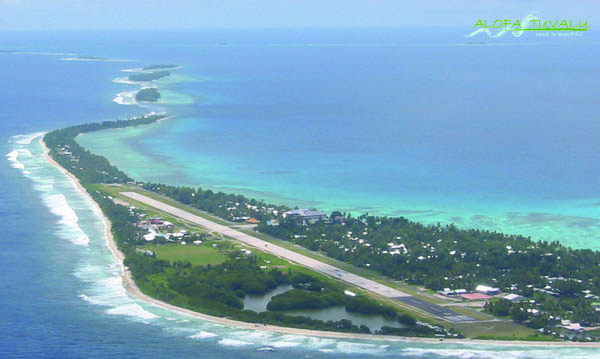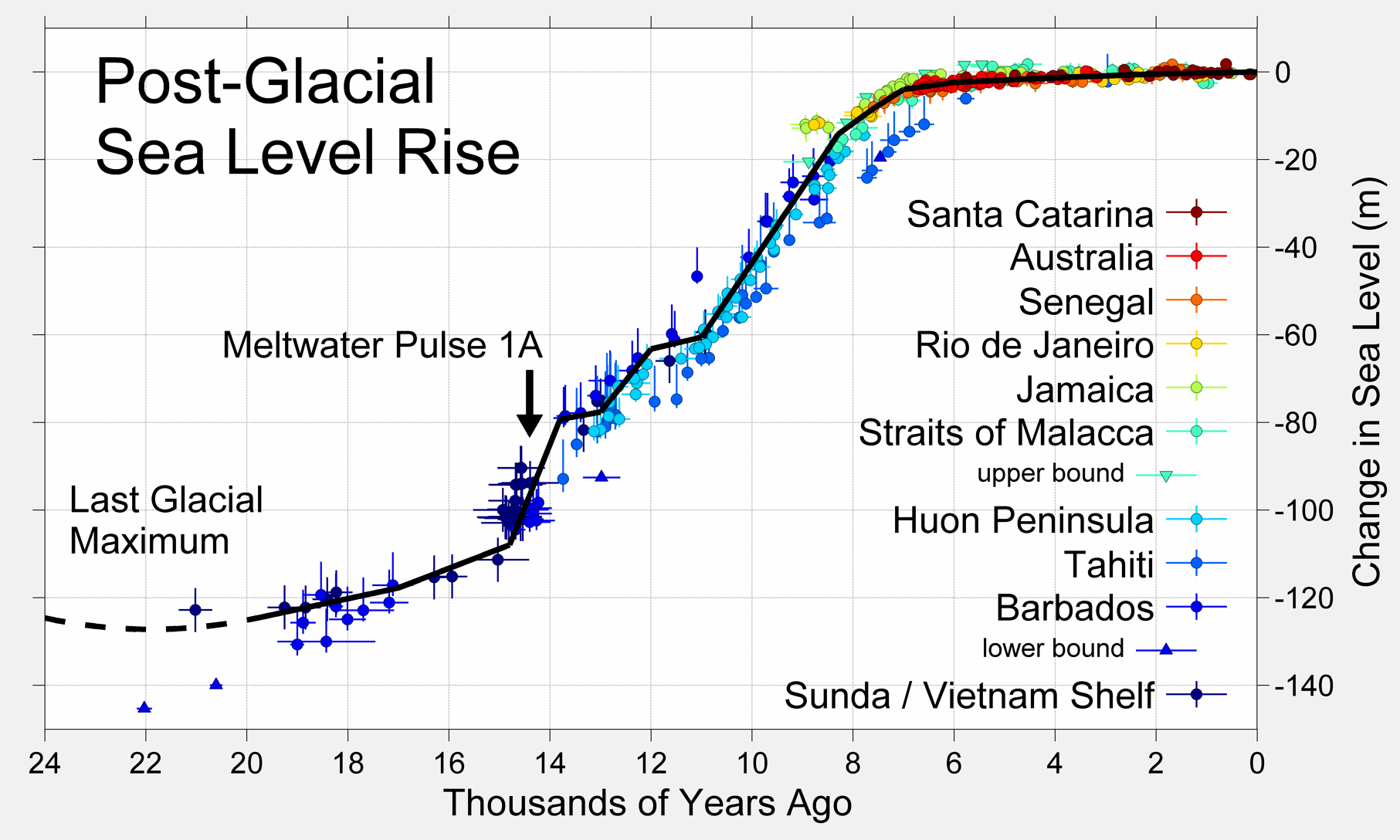Sea level rise is one of the big scare scenarios of human cause climate change. The claim of the rising sea level by the year 2100 ranges from six inches to two meters. The IPCC’s last report stated, depending on the presumptions, that sea level could rise from 0.26 to 0.97 metres by 2100.
Global average sea level rose at an average rate of 1.8 [1.3 to 2.3] mm per year over 1961 to 2003. The rate was faster over 1993 to 2003, about 3.1 [2.4 to 3.8] mm per year. Whether the faster rate for 1993 to 2003 reflects decadal variability or an increase in the longer-term trend is unclear.
Notice the two meter rise is not included, but that doesn’t stop the alarmists from claiming a two meter rise.
NASA’s Gavin Schmidt was recently interviewed by the Vancouver Sun about climate change. When asked about sea level he said:
You are going to have to put up with rising sea levels; they are not going to go down. But there’s a huge difference between a foot or two over 100 years and a metre or two metres.
In 2013, National Geographic made the claim that New York city would see sea level increase by two meters.

National Oceanic and Atmospheric Administration, we can expect to see as much as 6.6 feet (2 meters) of sea-level rise by 2100, though a lower figure is more likely.
This is pure nonsense. NOAA has a website called Tide And Currents that has historic data of sea level from all round the planet. This is rate of rise at The Battery in New York city:

This is pretty typical of the east coast of North America. At that rate, 2.83mm per year, would mean a rise of 28cm in 100 years, under a foot. A rate, as you can see in the graph, that has been constant since 1860 when records were started.

The poster child for sea level are the islands of the Pacific Ocean, which are claimed to be sinking, and will soon to disappear. Yet, this study shows no change in many of the Pacific islands, including Tuvalu, the island that claims they are being inundated and swallowed up by the sea. This study states:
If the depression of the 1998 cyclone is ignored there was no change is sea level at Tuvalu between 1994 and 2008; 14 years, despite 14 separate tsunami events. The claim of a trend of + 6.0mm/yr is without any justification.
The Maldives is another alarmist case of a disappearing island. Except:
On the contrary, we find no signs of any on-going sea level rise.
Maldives is another poster child, with the President of the island making his claim of being swallowed up. Of course, their President also demanded the West send them more money…
This paper took measurements from ground stations (not satellite) from round the world. The rate of sea level rise:
Over the entire century the mean rate of change was 1.74 ± 0.16 mm/yr.
Sea level rise has two components – Steric and mass. Steric deals with the salinity and thermal components that change the volume of water, where as mass is the physical change in the volume of water. Steric is influences by the temperature of the seas, and mass is changed by the inflow of water from ice sources. A summary of this can be found here.
Satelite measurements show a higher rate, about 3.2mm per year. Why the discrepancy with ground stations? Does this show there is an acceleration underway?
No. The issue of the higher rate for satellite is due, in part, to a measuring error. But the satellites used don’t all agree with each other, some confirm the ground station data. See here.
To get to a linear run up to two meters in one hundred years would require an instant change in the current rate of rise from 1.74mm/year to 20 mm/year (2000mm/100 years). That’s one huge increase! The longer this snap up trick doesn’t happen the steeper that rate to the two meters must be.
A snap jump in any rate cannot happen. To go from one rate to another rate requires an acceleration.
AGW alarmists claim that sea level rise is accelerating. See here, here and here.
The Church & White paper claimed:
” a 20th century rate of sea-level rise of 1.7 ± 0.3 mm yr−1 and a significant acceleration of sea-level rise of 0.013 ± 0.006 mm yr−2. This acceleration is an important confirmation of climate change simulations which show an acceleration not previously observed. If this acceleration remained constant then the 1990 to 2100 rise would range from 280 to 340 mm, consistent with projections in the IPCC TAR.”
As I noted in a previous post, acceleration is just compound growth and can be expressed as a percent increase in the change. So what is 0.013 ± 0.006 mm yr−2 as a percent increase? It’s 0.007%. I fail to see how a 0.007% increase constitutes a “significant” acceleration!
But how realistic are any of these claims, such as two meters in 100 years? It’s simple to show. One only has to plot the current rate over that past 110 years of in situ measurements and then extrapolate the various scenarios.
You simply put the data into a spreadsheet and have it calculate what the growth would have to be to meet that target of two meters. It’s 3.7% per year (A far cry from the 0.007%). At this rate the doubling time is around 11 years.
I added this rate to the end of the Tide and Currents graph to get this:

The dashed line is the twenty mm per year with a snap change in the rate.
The 3.7% acceleration is the only way to get from here to two meters in 100 years. It also means that by the last year, 2099, the rate of sea level rise would have to be a staggering 84mm/year! That’s more in one year than in all of the previous 110 years. Sorry, but that is just not credible.
In Sept of 2008, three researchers, and supporters of AGW, dropped a bombshell paper where they calculated the maximum possible rise in sea level up to 2100.
On the basis of climate modeling and analogies with past conditions, the potential for multimeter increases in sea level by the end of the 21st century has been proposed. We consider glaciological conditions required for large sea-level rise to occur by 2100 and conclude that increases in excess of 2 meters are physically untenable. We find that a total sea-level rise of about 2 meters by 2100 could occur under physically possible glaciological conditions but only if all variables are quickly accelerated to extremely high limits. More plausible but still accelerated conditions lead to total sea-level rise by 2100 of about 0.8 meter. These roughly constrained scenarios provide a “most likely” starting point for refinements in sea-level forecasts that include ice flow dynamics.”
This sent off a scurry of activity at AGW’s prime blog RealClimate who were not too happy with the paper. Pfeffer even had to come to RC to defend the paper.
But of course, we all know projections of what might be are a far cry from what will be. Thus, this is all academic because there is no evidence of any kind of acceleration. Even as far back as 2006:
…there is no discernible divergence in the rate of sea-level rise over the past two centuries to suggest a connection with the documented increase in atmospheric CO2 concentration… the rate of sea-level rise has been linear over this time period and shows no indication of the pronounced mid-20th-century increase.
See recent studies here, here and here.
Sea level rise has been going on since the end of the last glaciation period, some 20,000 years ago. The rise was fast at first as the glaciers melted, but has clearly leveled off.

The alarmist worse case would need a return to those early days of rise. Suffice it to say, there is no credible evidence for any kind acceleration in sea level rise, which is required by AGW theory to happen. It’s just not there.
Note: At Liberty Cannon Media Group we believe in many voices and solutions, not less. Therefore from time to time we may publish columns and opinions that are not necessarily those belonging to Liberty Cannon Media Group.